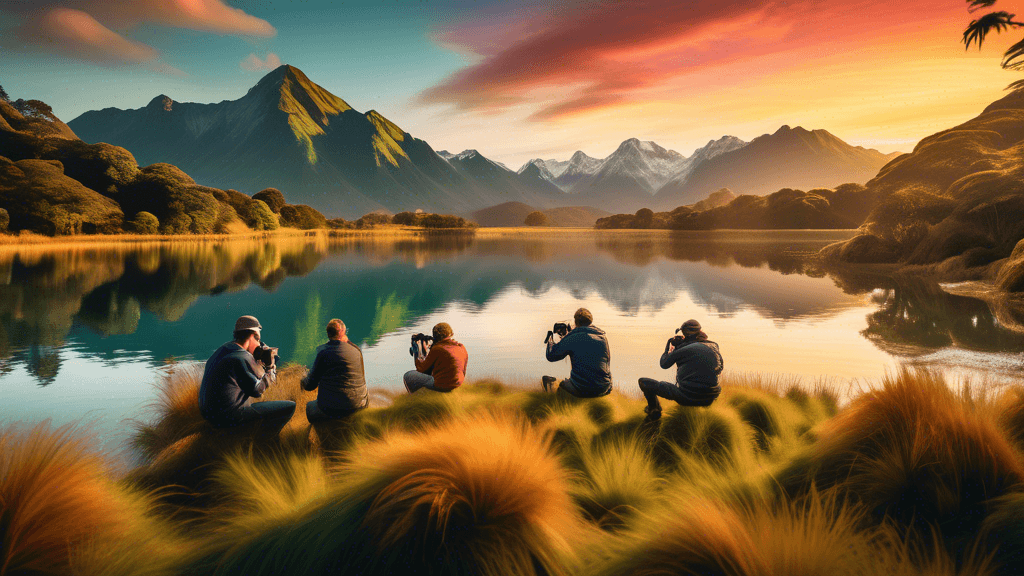
Mastering Landscape Photography in Aotearoa: A Comprehensive Course
Share
Understanding the Allure of Landscape Photography in Aotearoa
Often referred to as the ‘Land of the Long White Cloud,’ Aotearoa, or New Zealand, invites photographers to capture its sprawling mountains, dramatic coastlines, and lush greenery. But why does landscape photography resonate so deeply with both photographers and viewers alike?
Landscape photography does more than simply document a scene; it conveys the majesty of nature and our relationship with it. This genre of photography encourages us to consider broader environmental issues—such as climate change and conservation—while appreciating the stunning natural beauty of the world around us.
Equipment Essentials for Capturing Aotearoa’s Landscapes
Before diving into the artistic aspects, understanding the technical requirements is essential. Equipment plays a crucial role in landscape photography, and making the right choices can greatly influence the quality of your photos.
- Camera: A DSLR or mirrorless camera with a good dynamic range is preferable. These cameras allow for greater control over settings such as shutter speed, aperture, and ISO.
- Lenses: A wide-angle lens is perfect for capturing expansive landscapes. A telephoto lens, on the other hand, can be used to focus on distant details such as mountain peaks or wildlife.
- TriPod: A sturdy tripod is vital for stability, especially in windy conditions or when using slow shutter speeds to capture movement in elements like water or clouds.
- Filters: Polarizing filters to enhance colors and reduce reflections, and neutral density filters to manage light in bright conditions are highly recommended.
Composing the Perfect Shot: Techniques and Tips
Composition is paramount in landscape photography. It's not just about capturing a scene; it's about presenting it in a compelling and visually appealing way.
Here are some techniques to enhance your compositions:
- The Rule of Thirds: Imagine your frame divided into nine equal segments by two vertical and two horizontal lines. Placing points of interest along these lines or their intersections creates a more balanced composition.
- Leading Lines: Use natural lines—like rivers, trails, or shorelines—to lead the eye into the image, guiding viewers through the scene.
- Foreground Interest: Incorporating elements like rocks or flowers in the foreground can add depth and scale to your photographs.
Mastering Light and Weather Conditions
The interplay of light and weather can dramatically alter the mood and impact of a landscape image. Understanding and anticipating these changes are crucial.
Golden Hours
The periods shortly after sunrise and before sunset, known as the 'golden hours', provide soft, warm lighting that enhances textures and colors in the landscape.
Adapting to Weather
Different weather conditions offer unique opportunities. Misty conditions can add a mysterious element to forests and hills, while stormy skies can create dramatic backdrops. Renowned landscape photographer, Ansel Adams, once said, You don’t take a photograph, you make it. This is particularly true when embracing the unpredictability of weather.
Enhancing Your Skills with Post-Processing Techniques
Post-processing is an essential skill in the digital age, allowing photographers to refine their visions and convey the emotions of the scene more powerfully.
- RAW Files: Shooting in RAW captures a greater level of detail, providing more flexibility in post-processing.
- Editing Software: Tools like Adobe Lightroom and Photoshop enable photographers to adjust exposure, contrast, saturation, and sharpness to bring out the best in their images.
Learning the fundamentals of these programs can dramatically improve the quality of your photos, transforming a good shot into a great one.
Joining a Community of Landscape Enthusiasts
Photography, while often a solitary pursuit, benefits greatly from community interaction. Joining a community offers invaluable feedback, stimulates creativity, and provides motivation. Workshops, both online and in person, are fantastic ways to connect with fellow enthusiasts and learn from seasoned professionals.
Participating in these communities not only helps sharpen your technical skills but also deepens your understanding of the artistic aspects of landscape photography.
Final Thoughts and Call to Action
Mastering landscape photography in Aotearoa is a journey as dynamic and rewarding as the scenery itself. Whether you are a beginner eager to explore the basics or an advanced photographer looking to refine your skills, the landscape of New Zealand offers endless opportunities for growth and expression.
Remember, the goal of landscape photography goes beyond capturing beautiful scenes; it's about conveying a sense of place and emotion, and perhaps most importantly, fostering a connection with the environment and promoting its preservation.
Are you ready to begin your journey into landscape photography? Embrace the challenge, strive for continuous learning, and most importantly, enjoy the process of creating breathtaking images that tell the story of our precious Earth.





